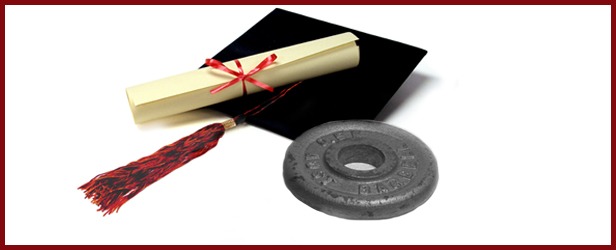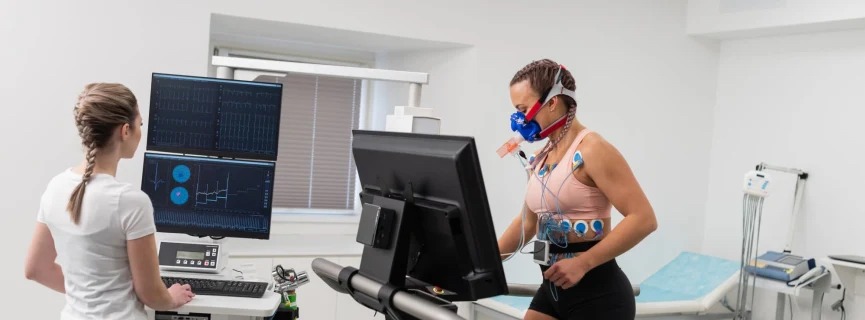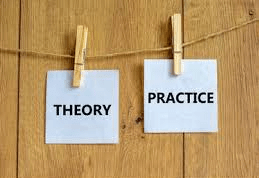
In past posts, I explored professionalism within the exercise profession, as well as the constituents that formed credibility. I advocated higher academic standards as a vital first step in moving the exercise professional field in a favorable and advantageous direction. However, is it possible that foundational knowledge within some of our academic institutions is lacking in practicality and applicability? Is it possible that academia may be part of the problem? In the following sections, I would like to explore these questions to better understand how we may continue to refine and grow the exercise profession discipline, in a way that better serves graduates of exercise science.
There exists a train of thought that one does not learn anything useful and practical from a degree. Is this, or should this, be acceptable? I submit that it can be true, and should be unacceptable; students pay large sums of tuition and time to acquire “tools”, in the form of knowledge, with the intention of entering the work force in a way that is efficacious. It is also true that I saw a university graduate (masters of science in biomechanics and kinesiology) at a fitness facility many years ago negligently coaching clients. What might have caused such a situation to occur? I would like to explore this question by considering an article by Ives and Knudson (2007).

Ives and Knudson (2007) submitted that graduates of most exercise science degrees were not prepared to give professional and comprehensive advice to clients/patients because of a narrowing of exercise science programs from which they studied. The authors argued that there has been an over-emphasis on exercise physiology with inadequate attention placed upon other disciplines such as motor learning and biomechanics (Ives & Knudson, 2007). Ives and Knudson (2007) continued to suggest that the drift away from a balance between these disciplines within exercise science programs might be threatening the acceptance of graduates in the workforce. Ives and Knudson (2007) supported their positions by providing three main problems associated with narrowly constructed exercise science programs: the danger of a narrow scope of practice and overspecialization, lack of uniqueness in prescribing exercise, and the lack of documented effectiveness and the disconnection between theory and practice.
The narrowness of a scope of practice may negatively affect the degree of autonomy of exercise science graduates (Ives & Knudson, 2007). The authors suggested that overspecialization may convert graduates into technicians rather than allied health professionals. Ives and Knudson (2007) continued by noting three factors emerging from narrow scope of practice: an overly discipline-specific structure, inflexible and underutilized roles, and inadequate attention by research and policymakers. Ives and Knudson (2007) suggested that these factors have fragmented the field of exercise science.

Another limitation stemming from programs focusing heavily upon exercise physiology is the lack of uniqueness in prescribing exercise. Ives and Knudson (2007) suggest that many other disciplines are implementing skill sets traditionally held by exercise scientists. The authors argued that the dogmatic and rigid proclivities of exercise science programs are hindering competiveness in the workforce. Ives and Knudson (2007) noted that in order to avoid the professional extinction of exercise science, professionals should better document the benefits of the exercise science field.

The third limitation Ives and Knudson (2007) proposed was a lack of documented effectiveness and a disconnection between theory and practice. The authors cited that the American College of Sports Medicine identifies forty-six medical conditions for which exercise physiologists can assist in treating (Ives & Knudson, 2007). However, twenty-one of the forty-six conditions required assessment of gait, balance, mobility, activity specific functional tests, controlled breathing, reaction time and coordination (Ives & Knudson, 2007). Ives and Knudson (2007) suggested that the knowledge, skills, and abilities that exercise physiologists possessed would be inadequate since the aforementioned assessments would also require extensive knowledge of motor behavior and biomechanics (Ives & Knudson, 2007).
Exercise science is a valuable discipline. However, like any profession, it must be open to scrutiny as this process encourages us to continue building, strengthening, and refining our field. Indeed, it is this very process that discourages dogmatism and pushes a profession forwards and beyond its growing pains. I believe that exercise science programs are moving through these stages. In time, I also believe they will become stronger, more credible, and outstanding because of these integral steps.
References
Ives, J. C., & Knudson, D. (2007). Professional practice in exercise science; The need for greater disciplinary balance. Sports Medicine,37(2), 103-115.
-Michael McIsaac
